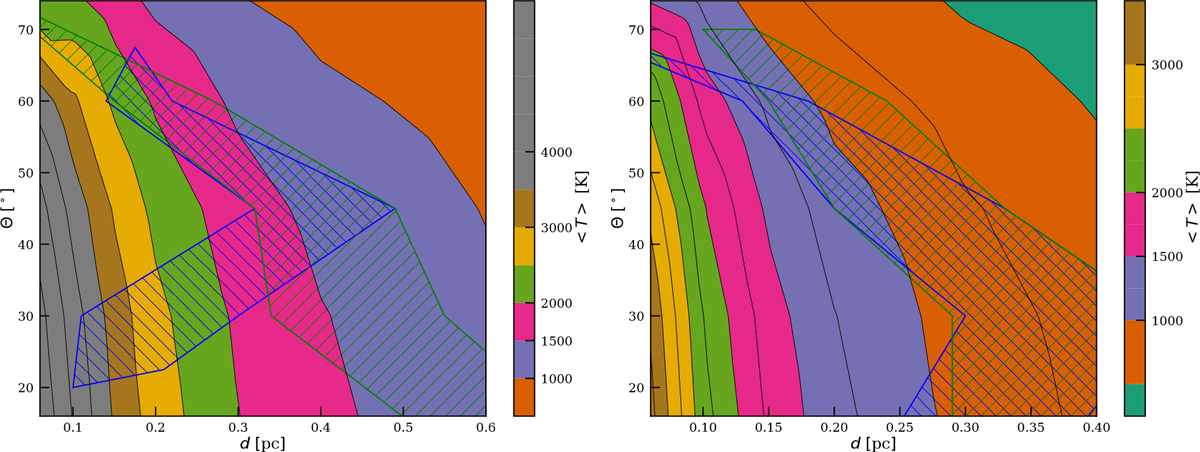Fig. 7

Peak mean temperature of the disk (contours) due to the supernova radiation as a function of the distance to a supernova (d in parsec) and the impact angle (Θ in degrees, measured from the disk’s angular-momentum axis). The adopted type IIp supernovae, SN11aof (left), has a peak luminosity of 1.1 × 1043 erg s−1 and SN10a (right) has a peak luminosity of 2.3 × 1042 erg s−1. Evaporation of the bulk of the solids in the proto-planetary disk is achieved when the irradiation heats it to a mean temperature of ≳ 1500 K. The two shaded regions indicate the range in distance for which the Sun’s obliquity is consistent with the currently observed value of 5.°6 ± 1.°2 (blue with “\\” hashes), and for which the disk is truncated to 42–55 au (green with “//” hashes). This area is indicated in Figs. 11 and 12 with a blue polygon. The most promising part of parameter space is where the two hashed areas overlap because that is where both criteria are met.
Current usage metrics show cumulative count of Article Views (full-text article views including HTML views, PDF and ePub downloads, according to the available data) and Abstracts Views on Vision4Press platform.
Data correspond to usage on the plateform after 2015. The current usage metrics is available 48-96 hours after online publication and is updated daily on week days.
Initial download of the metrics may take a while.


